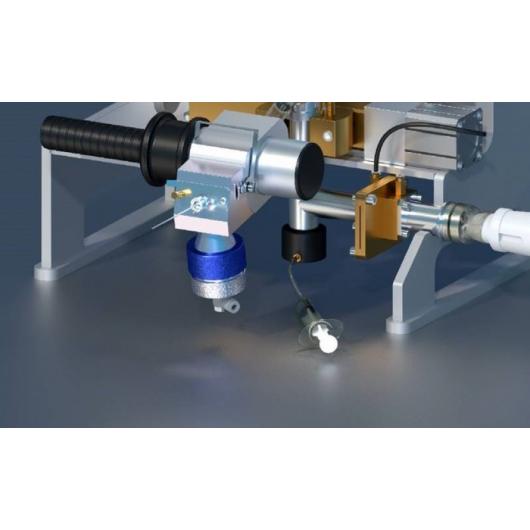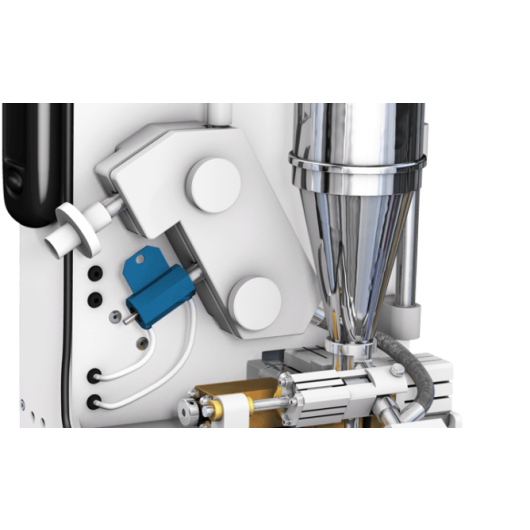


Features
- Precise repeatable dosing of exposure object
- Allows coupling of any inhaler to the PreciseInhale®
- (DPIs and MDIs/pMDIs)
- Automatic actuation
- Adjustable inhalation flow rate
- Registration of pressure drop (DPIs)
- USP (United States Pharmacopoeia) design
Disease models
- Asthma
- Influenza
- Diabetes
- Migraine
- Chronic obstructive pulmonary disease
Applications
- Pharma
- Environmental studies
PreciseInhale® delivers results with a proven high correlation between laboratory and human testing—paving the way for more cost-efficient medicines for asthma and chronic obstructive pulmonary disease —and a new generation of inhaled drugs in broader therapeutic areas, like migraine, impotence, diabetes and influenza. PreciseInhale® is built in modules. It can be tailored closely to the customer’s specific needs. It has been purchased by both pharma scientists developing new treatments, and environmental researchers testing the effects of airborne particle pollutants.
- Separating aerosol generation and dispensing
Aerosols are generated with a high-power air jet of 10-160 bar pressure. The energy is then siphoned off, leaving a plume of aerosol that is ‘pulled’ into a fine stream by a vacuum pump, enabling it to be dispensed separately across a range of exposure modules.
- PreciseInhale®’s software monitors and measures aerosol in real time.
Automated software and a light-scattering device maps and measures the aerosol concentration and breathing pattern in real time. This enables researchers to customize their aerosol to their exact needs, and generates detailed voluminous PK data, including particle size distribution data and Tmax and Cmax curves.
Exposure modules:
- XposeALI ®3D cell exposure module combines aerosol capability with 3D cell models cultured in an Air Liquid Interface (ALI). It enables studies of cellular effects induced by airborne particles.
- DissolvIt ® enables in vitro simulation of absorption and dissolution of respirable particles in the lung epithelium.
- This nose-only module exposes single rodents, one-at-a-time, to respirable aerosols from PreciseInhale® safely, gently and precisely - reducing standard deviation, the number of test animals needed and obtaining highly reliable pharmacokinetic data.
- With the module for intratracheal inhalation exposures of rodents to respirable aerosols by the PreciseInhale® system, it is possible following administration to obtain pharmacokinetic data resembling clinical inhalation exposures.
- Inhalation Sciences' isolated perfused and ventilated lung (IPL) system is a specially tailored version of the IPL designed for exposures of respirable aerosols from the PreciseInhale® system.
Cappellini F, Di Bucchianico S, Karri V, Latvala S, Malmlöf M, Kippler M, Elihn K, Hedberg J, Odnevall Wallinder I, Gerde P, Karlsson HL. Dry Generation of CeO2 Nanoparticles and Deposition onto a Co-Culture of A549 and THP-1 Cells in Air-Liquid Interface-Dosimetry Considerations and Comparison to Submerged Exposure. Nanomaterials (Basel). 2020 Mar 27;10(4):618. doi: 10.3390/nano10040618. PMID: 32230801; PMCID: PMC7221976.
Gerde P, Nowenwik M, Sjöberg CO, Selg E. Adapting the Aerogen Mesh Nebulizer for Dried Aerosol Exposures Using the PreciseInhale Platform. J Aerosol Med Pulm Drug Deliv. 2020 Apr;33(2):116-126. doi: 10.1089/jamp.2019.1554. Epub 2019 Oct 15. PMID: 31613690; PMCID: PMC7133437.
Hassoun M, Malmlöf M, Scheibelhofer O, Kumar A, Bansal S, Selg E, Nowenwik M, Gerde P, Radivojev S, Paudel A, Arora S, Forbes B. Use of PBPK Modeling To Evaluate the Performance of Dissolv It, a Biorelevant Dissolution Assay for Orally Inhaled Drug Products. Mol Pharm. 2019 Mar 4;16(3):1245-1254. doi: 10.1021/acs.molpharmaceut.8b01200. Epub 2019 Feb 15. PMID: 30640475; PMCID: PMC6503535.
Ji J, Upadhyay S, Xiong X, et al. Multi-cellular human bronchial models exposed to diesel exhaust particles: assessment of inflammation, oxidative stress and macrophage polarization. Part Fibre Toxicol. 2018;15(1):19. Published 2018 May 2. doi:10.1186/s12989-018-0256-2



